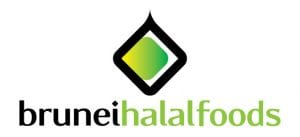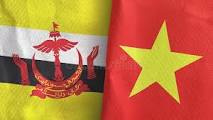[The Oxford Business Group reported the following on 21st January 2011.]
Brunei Darussalam Review 2010
For Brunei Darussalam 2010 was a year of consolidation and building for the future. The economy has emerged from two years of negative growth amidst the fallout from the global financial crisis, and there are projections of better things to come in 2011.
While final year-end figures have yet to be released, it seems the Asian Development Bank’s forecast for GDP expansion of 1.1% will likely be met.
With the hydrocarbons sector contributing around 90% of Brunei Darussalam’s GDP, a steep rise in prices – with oil ending the year just under the $90 mark and expectations that it could top $100 in early 2011 – could have a major impact on the economy.
Additionally, oil production is set to increase in coming years to 200,000 barrels per day (bpd) or more, as a result of new fields coming on stream and of long-term efforts to raise output from existing fields to above the average of 190,000 bpd in recent years.
Another boost for the sector came in mid-December, when Brunei Darussalam and Malaysia formally settled a long-standing dispute over two offshore blocks, agreeing to jointly develop Blocks J and K, located in the waters between Brunei Darussalam and the Malaysian state of Sarawak. With some estimates putting the value of the combined oil and gas reserves of the two blocks at up to $100bn, the shared flow from the fields could help to ensure the viability and sustainability of the country’s energy sector for years to come.
Throughout 2010 efforts to broaden the base of the economy continued, a policy that has met with some success. In April the country’s first petrochemicals facility was opened. The $450m methanol plant, sited at the Sungai Liang Industrial Park, has the capacity to produce some 850,000 tonnes of methanol annually, with its entire output destined for the export market, primarily Japan.
A joint venture between Petroleum Brunei and Japanese firms Mitsubishi Gas Chemical Company and ITOCHU Corporation, Brunei Methanol Company is seen as just the first of a number of downstream projects that will build off the success of Brunei Darussalam’s hydrocarbons industry, with further chemical production businesses in the works.
The year also saw an increased focus on the financial sector, particularly the sharia-compliant segment, which is considered to have great potential as a means of attracting investment and of serving the needs of both the local and international banking communities.
One of the measures taken during 2010 was the establishment of the Brunei Darussalam Monetary Authority, which formally began operations at the beginning of 2011. The authority is charged with overseeing monetary policy, supervising financial institutions and managing the local currency, and will add another dimension to the country’s financial markets by acting as a strong regulatory body and working to build investor confidence.
The Sultanate is also optimistic about the potential for its sharia-compliant food and pharmaceuticals sector, with its Brunei Halal Brand looking to capture a healthy slice of the global halal market. A recent high point in this campaign came in early December at the ground-breaking ceremony for a halal pharmaceutical and nutraceutical products plant. The $20m project is being developed by Vivapharm (Brunei), a joint partnership between Canadian firm Viva Pharmaceutical, Aureos (Brunei) Capital Fund – the private equity fund set up by the government through the Ministry of Finance – and other local investors.
Brunei Darussalam faces a number of challenges as it enters the new decade, one of which is its dependence on imported foodstuffs. While efforts have been made to boost domestic agricultural production, both by increasing the amount of land available and through the use of higher-yielding varieties of some crops, especially the staple rice, the limited area of land not dedicated to other use or protected under the country’s stringent conservation laws means it is unlikely Brunei Darussalam will be able to achieve self-sufficiency in many areas.
The Sultanate remains vulnerable to price and supply fluctuations, which in turn can have a very real effect on domestic inflation, and this was seen in 2009 when shortages of some commodities saw steep increases in the cost of rice and grains.
With supplies returning to near normal levels, inflation eased back from the 2.7% recorded in 2009. The latest figures from the Department of Economic Planning and Development showed the consumer price index declining and year-on-year inflation at around 1.2% as of August.
With the local hydrocarbons industry looking forward to expected growth on the back of higher oil prices, the Sultanate will have the additional time and resources it needs to devote to further diversifying the economy. The Asian Development Bank has forecast 1.5% GDP growth for 2011, although this could well be surpassed if oil prices maintain their momentum into the new year, as they looked set to do in early January.



